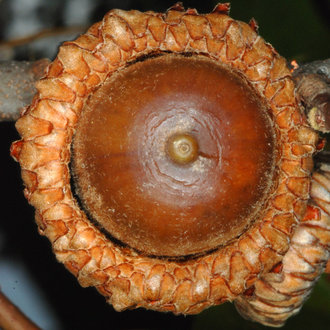Scarlet Oak vs Hill's Oak
This guide is under construction and has not been published yet. It may have errors. When in doubt, double-check other sources for definitive ID.These oaks are similar and difficult to tell apart in the small area where their ranges overlap; there is even some controversy over whether they constitute separate species, although most authorities nowadays consider them separate. Close examination of acorns is the most reliable way to distinguish these two oaks. These species are theorized to hybrid but the existence of hybrids has not been confirmed. It may not be possible to identify all individuals.
Scarlet Oak (Quercus coccinea) | Hill's Oak (Quercus ellipsoidalis) |
A large, fast-growing, short-lived red oak of dry upland sites, named for the dark red color of its fall foliage. | A cold-hardy, drought-tolerant oak mostly found in a small region of the upper midwestern U.S. Also called Northern Pin Oak, but more closely related to other species than pin oak. |
Acorns usually have one or more rings of pits near their apex. Photo © Doug Goldman, CC BY 4.0. | Acorns usually lack rings of pits near their apex, having at most one faint ring of pits. Photo © Rob Foster, CC BY 4.0. |
References & External Resources
These short lists show only links helpful for ID. For a complete list of references and resources also covering other aspects of ecology, visit the links section of the full article on each plant, which is the first entry here.




